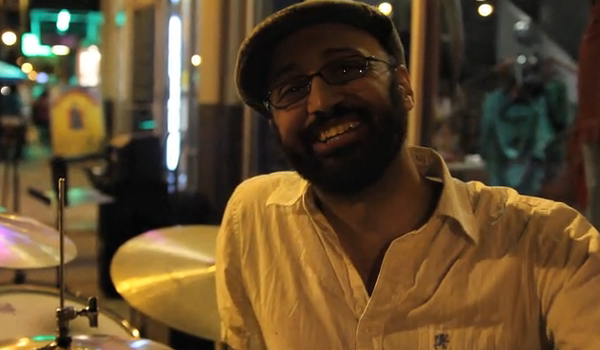 His first project failed, so he tried again
His first project failed, so he tried again
That takes guts, but we’ve seen this happen before and we’re excited to feature more “retries” as we find them. What lessons can we learn from Michael? What did he change to succeed the second time?
View Michael Joyner’s GOOD Kickstarter
(View Michael Joyner’s FAILED Kickstarter)
Why did his first Kickstarter fail?
“I can’t really say why it failed. I posted the campaign on my Facebook page daily and emailed my fans and hoped for the best…I felt discouraged at first because I thought if no one is funding my album then how am I going to sell it even if I had it finished in hand.”
Most likely the “hoping for the best” route is the main culprit. In other words, it was a lack of up front planning and strategy.
To take it a step further, it sounds like a lack of human interaction and one-on-one communication. Spamming your Facebook page daily should be your third tier priority over talking to people face-to-face and directly via personal emails.
What did Michael change in order to succeed the second time?
His first music Kickstarter had 13 backers who pledged $385 of a $2500 goal. His second attempt had 31 backers and raised $1059 of a $700 goal. What did he change?
“I recruited some close friends/fans of mine that I felt truly wanted to see me and my music succeed and we put together a marketing strategy to relaunch the kickstarter campaign.
We cut out some of the prizes offered in the original campaign and made them simple.
We organized a listening party of friends and fans to come to my home and listen to the album…I also preformed a live set of songs from the album and explained the meaning behind some of the songs. It really meant a lot to connect with them in my own space where the songs were conceived and recorded.”
Here’s the recap:
- He lowered his goal amount
- He simplified his rewards by getting rid of some options (not something we’d typically recommend)
- He changed to a 30 day campaign from 60 days
- He got help
- He put together a strategic plan
- He arranged face-to-face engagement with friends and fans
Take Away
Michael launched his first Kickstarter on a wing and a prayer. He thought “yeah man, $2500 would be great”, but he failed to start by making a list of his Circle of Influence. Doing this first would have uncovered that he doesn’t have a Circle of Influence (friends, family, fans) large enough to raise $2500.
He didn’t assess the lowest viable goal amount he needed to make his project fly. If he wanted to hit $2500 but could have made a minimal version of the album for $700, he could have applied a flex goal strategy with a $700 minimum goal and a $2500 focus goal.
The passive “post it everywhere and pray” theory sounds really convenient but it takes actual personal connections and interaction to make the world (and your Kickstarter) go ’round.
Interesting usecase. Thanks for sharing.